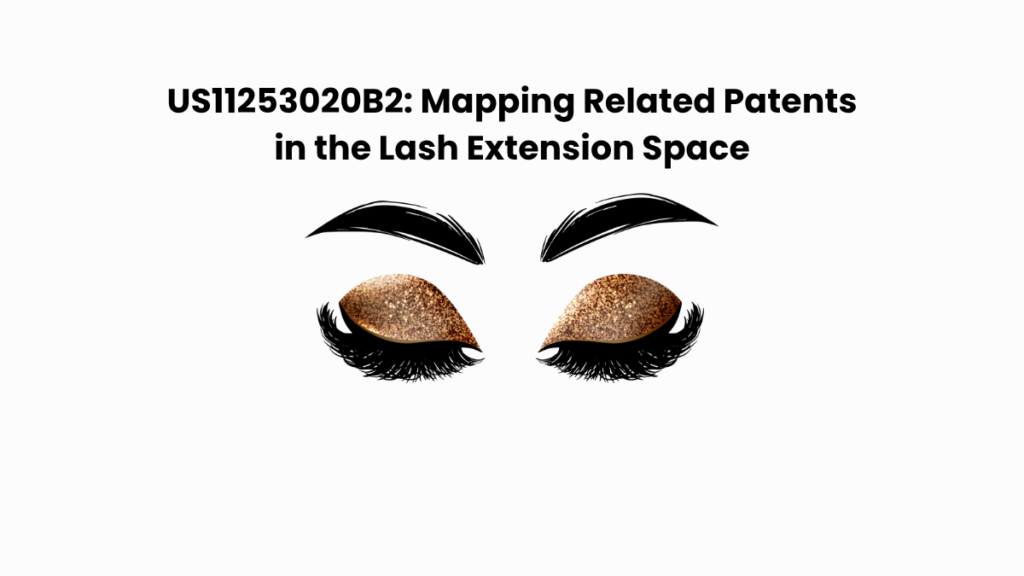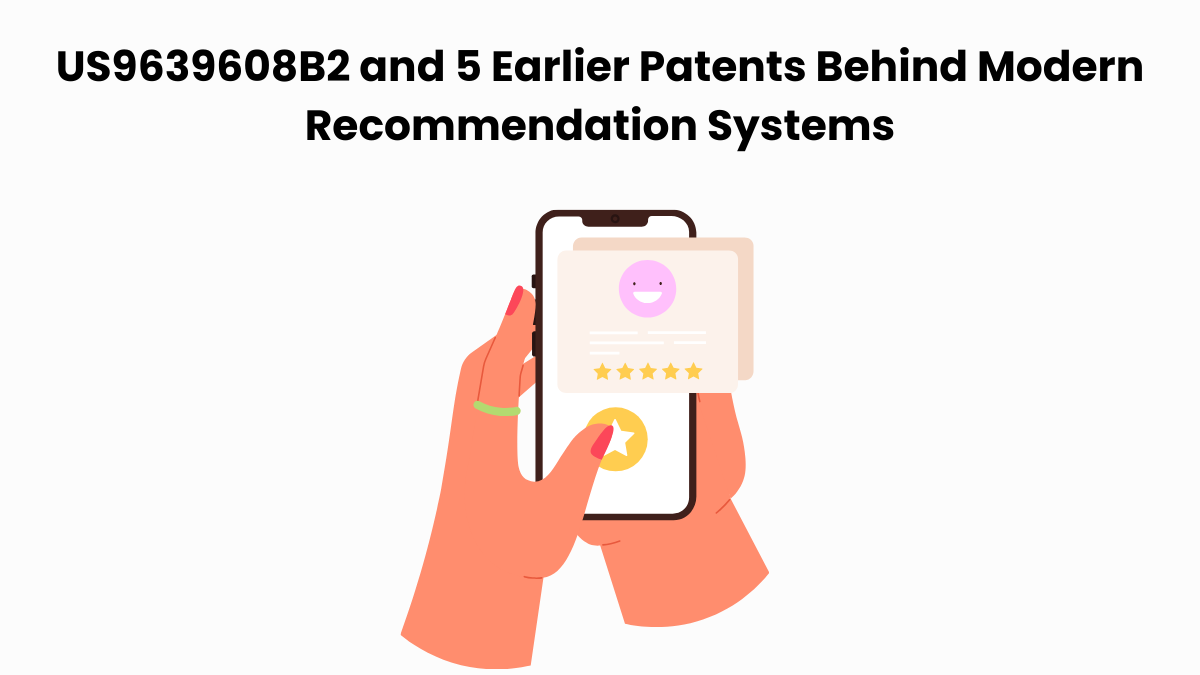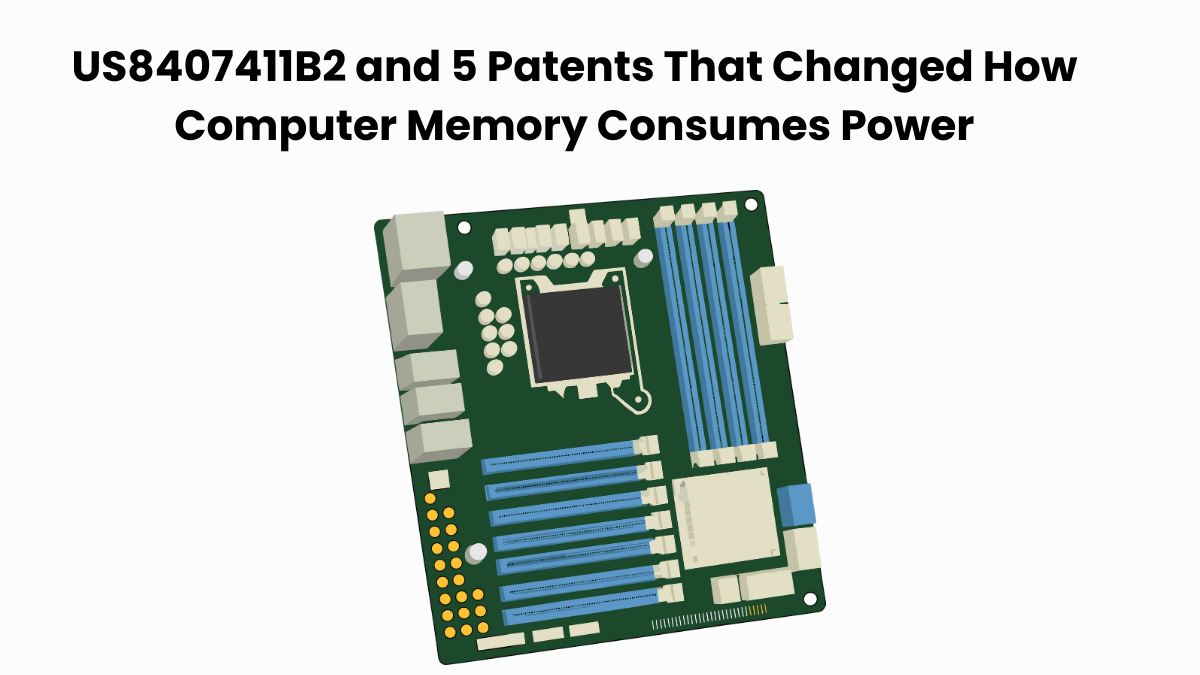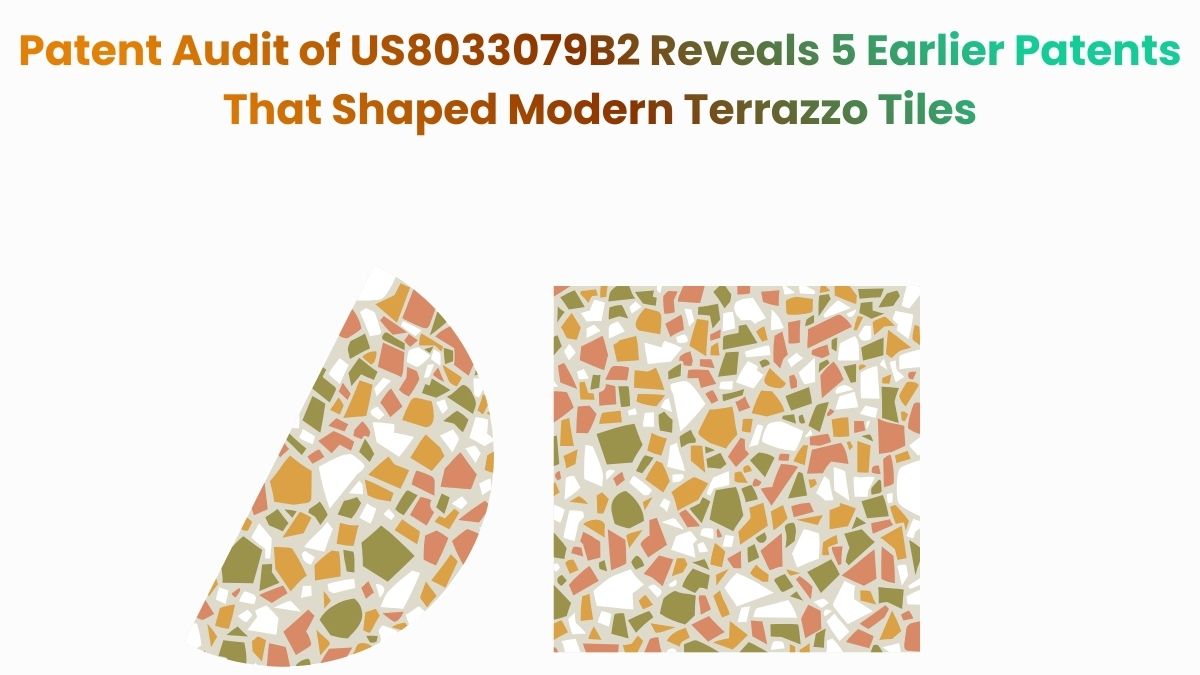Some inventions are simple enhancements. Others redefine how products are designed and used. Patent US11253020B2, now at the center of the Lashify Inc. v. Qingdao Serafina International Trade Co. Ltd. et al. case, belongs to the latter.
This patent outlines a lash extension system where artificial clusters are affixed beneath natural lashes, with select hairs fused at the base through heat. It’s a subtle yet impactful shift in cosmetic application, and one that’s increasingly echoed across modern beauty innovations.
In this article, we turn to the Global Patent Search (GPS) platform to uncover related technologies. Steering clear of legal interpretations, we’ll instead trace comparable structural concepts and design strategies found in other patents. Whether you’re in IP research, beauty-tech R&D, or simply following innovation trends in lash extensions, this GPS-backed breakdown offers insights grounded in data.
Understanding Patent US11253020B2
US11253020B2 introduces an artificial lash extension system designed for application beneath the natural lash line. The system features multiple lash extensions, each made up of clusters of artificial hairs that are bonded at the base using heat-based methods like heat sealing or fusing. This results in a flexible, lightweight design that enhances comfort and appearance during wear.
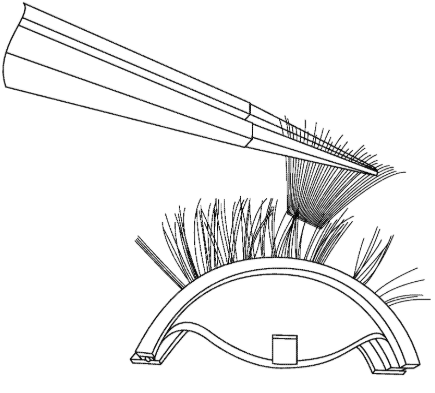
Source: Google Patents
Its four key features are
#1. Underside attachment: Extensions are affixed to the underside of natural lashes, not the eyelid.
#2. Cluster configuration: Each extension includes clusters of two or more artificial hairs.
#3. Heat-fused base: The clusters are connected at the base using heat, forming a seamless bond.
#4. Minimal thickness: The base is extremely thin, often less than 0.15 mm, for a lightweight, nearly invisible finish.
This lash system merges ease of application with a professional finish, offering a cleaner, more efficient alternative to traditional lash techniques through smart material engineering and process design.
Similar Patents As US11253020B2
To explore the innovation landscape surrounding US11253020B2, we ran the patent through the Global Patent Search tool. Below is a quick glimpse of the GPS tool in action:
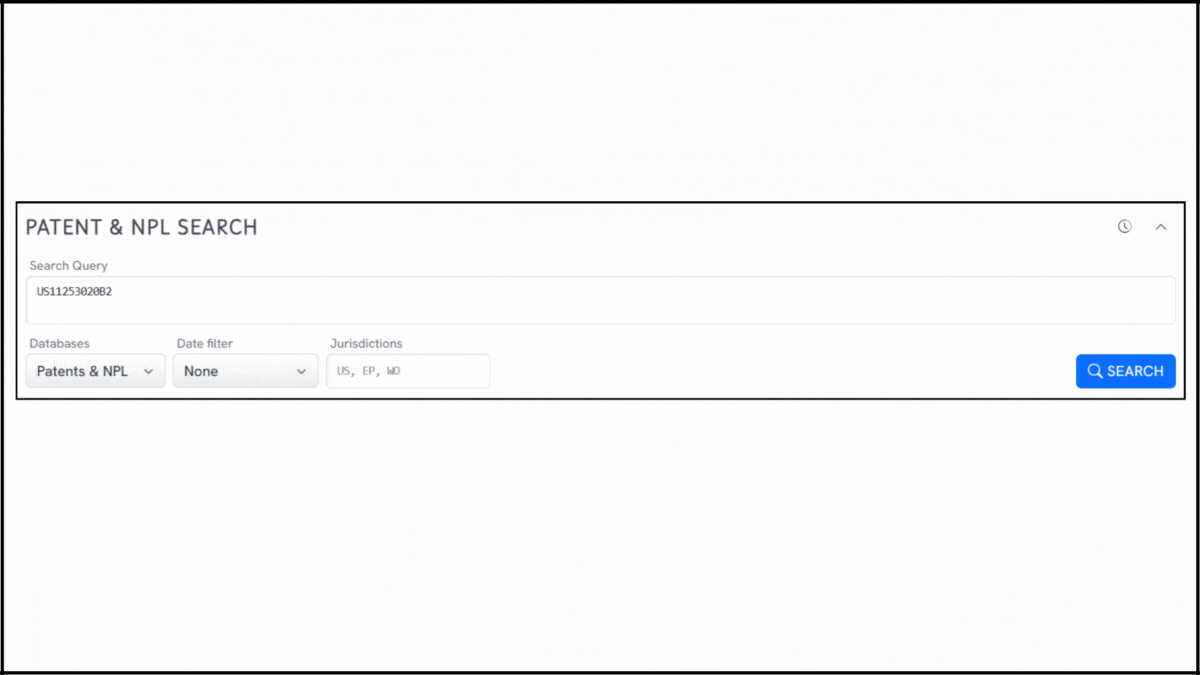
Source: Global Patent Search
This analysis surfaced a list of related patents that share structural and application-based similarities in lash extension design. Below, we highlight five of these references that reflect comparable ideas in artificial eyelash formation and attachment methods. These examples help frame the broader evolution of lash technologies.
#1. US20150296914A1
This U.S. patent, US20150296914A1, published in 2015, describes a method and assembly for applying artificial eyelashes that incorporates both individual lash strands and pre-formed clusters. The system emphasizes ease of application and lash customization by enabling integration of multiple lash lengths and arrangements across different eyelid zones.

Source: GPS
What this patent introduces to the landscape?
- Hybrid lash construction – Combines individual lashes with clustered groups for a unified lash effect.
- Tapered lash styling – Uses longer central lashes and shorter side lashes to create a more natural shape.
- Flexible application zones – Allows lash placement on various parts of the eyelid, including upper and lower lids.
- Simplified user process – Reduces complexity by minimizing the need for strand-by-strand placement.
How it connects to US11253020B2?
- Both patents utilize clustered artificial lashes to simplify and speed up the application process.
- Each invention enables customization of lash appearance through structural variation.
- Both systems move away from one-by-one lash placement in favor of modular solutions.
Why this matters?
US20150296914A1 showcases early developments in combining cluster-based lash design with simplified application techniques. It supports the broader direction seen in US11253020B2 toward efficient, customizable lash systems that enhance both user experience and aesthetic outcome.
#2. KR200381073Y1
This Korean utility model, KR200381073Y1, published in 2005, introduces a unique extension-type false eyelash system. It centers on a primary lash strand with multiple auxiliary hairs branching from it, designed to simplify attachment and improve bonding with natural lashes.

Source: GPS
What this patent introduces to the landscape?
- Single-strand core design – Features a main artificial hair with adhesive at one end for anchoring to the lash line.
- Branched auxiliary hairs – Multiple secondary hairs extend from the opposite end of the core to create fuller volume.
- Faster attachment mechanism – Reduces application time through pre-assembled lash units.
- Enhanced bond structure – The design improves adhesion between artificial and natural lashes using a focused bonding point.
How it connects to US11253020B2?
- Both emphasize lash designs that minimize individual lash handling and speed up application.
- Each utilizes a core-and-extension approach to build a fuller lash look through clustered or branched structures.
- Both systems focus on improving the attachment method to the natural lash rather than the eyelid.
Why this matters?
KR200381073Y1 highlights an early method of consolidating lash volume within a single attachment point, a principle echoed in US11253020B2’s heat-fused clusters. It reinforces the ongoing evolution toward more efficient, semi-permanent lash extension formats.
#3. FR3049833B1
This French patent, FR3049833B1, published in 2020, presents a device and method for manufacturing false eyelashes in situ, directly at the point of use, and applying them immediately to natural lashes. The system integrates lash formation and application into a single tool, streamlining the cosmetic process.

Source: GPS
What this patent introduces to the landscape?
- In situ lash creation – Enables real-time fabrication of false lashes using a specialized applicator device.
- Direct application tool – Combines manufacturing and placement into a single instrument for on-the-spot use.
- Keratinic fiber focus – Specifically designed for lashes and other keratin-based fibers like hair or brows.
- Integrated cosmetic workflow – Reduces multi-step processes by embedding lash formation within the applicator itself.
From AI-driven skincare diagnostics to smarter cosmetic systems, AI in healthcare is blurring the line between beauty and science.
How it connects to US11253020B2?
- Both innovations aim to streamline lash application through pre-formed or instantly-formed lash segments.
- Each patent centers on enhancing the user experience with simplified, tool-assisted lash placement.
- Both approaches move away from traditional strip lashes toward more customized and seamless lash integration.
Why this matters?
FR3049833B1 reflects an advanced direction in lash technology by uniting creation and application in one step. Its focus on efficiency and real-time customization parallels the goals of US11253020B2, which optimizes pre-fabricated cluster placement through heat-fused design.
#4. US20150114421A1
This U.S. patent, US20150114421A1, published in 2015, outlines a method for bonding false eyelashes using flare lash clusters that are shaped and trimmed before application. The process allows for placement of lash groups either above or below the natural lashes, offering flexible styling and application methods.

Source: GPS
What this patent introduces to the landscape?
- Use of flare lash clusters – Relies on pre-formed lash clusters with a fan-like shape for volume and ease of placement.
- Custom trimming approach – Lash clusters can be shaped and trimmed before application for tailored aesthetics.
- Above or below placement – Allows lashes to be bonded either on top of or beneath natural lashes.
- Group-based bonding – Focuses on applying lashes in grouped clusters rather than individual strands.
How it connects to US11253020B2?
- Both systems use clustered lash units to simplify and speed up the application process.
- Each allows for underside application, moving beyond the traditional eyelid-based bonding.
- Both designs aim to create a more seamless and voluminous lash appearance using grouped hairs.
Why this matters?
US20150114421A1 reinforces the trend toward cluster-based lash enhancement with flexible application zones, an approach shared by US11253020B2. It demonstrates how lash bonding techniques have evolved to support faster, more precise, and more comfortable cosmetic solutions.
#5. US20150359282A1
This U.S. patent, US20150359282A1, published in 2015, presents systems and methods for applying eyelash extensions using a layered approach. It introduces flexible combinations of natural and artificial base lashes as foundation elements for securing additional lash extensions.

Source: GPS
What this patent introduces to the landscape?
- Modular base-lash system – Supports the use of natural or artificial lashes as foundational attachment points.
- Extension layering technique – Enables multiple layers of lashes to be applied for enhanced volume or dimension.
- Adaptable lash sources – Allows integration of different types of lashes in one application cycle.
- Systematic application process – Describes a structured method for building up lash extensions in stages.
How it connects to US11253020B2?
- Both patents offer flexible foundation systems for attaching lash enhancements to natural or pre-applied lashes.
- Each supports lash layering or clustering to build out a fuller, more customized appearance.
- Both aim to simplify the process while enhancing final visual impact and wearability.
Why this matters?
US20150359282A1 demonstrates an early shift toward layered and modular lash systems, a concept echoed in US11253020B2’s cluster-based, heat-fused approach. These evolving structures support a broader trend toward efficiency and personalization in eyelash extension technologies.
To see how similar concepts are shaping the dental waste management system, explore our article on US11589969B2.
How to Find Related Patents Using Global Patent Search?

Understanding the broader innovation landscape around a patent can be essential for advancing cosmetic technologies, optimizing lash application systems, or identifying design trends in beauty-tech. The Global Patent Search tool simplifies this process by revealing related inventions that reflect similar construction methods, material strategies, or application mechanisms. Here’s how it works:
1. Enter the patent number into GPS: Input a patent number like US11253020B2 into the GPS interface. The system instantly converts it into a structured query, which can also be refined with specific keywords or descriptions like “lash cluster,” “adhesive,” or “heat-sealing.”

2. Explore conceptual snippets: Instead of traditional feature-by-feature mapping, GPS now presents smart text snippets. These surface relevant passages from related patents, helping users spot common techniques such as underside bonding or modular lash structures.

3. Identify related inventions: The tool highlights patents that share design principles, like pre-fused lash assemblies or clustered lash grouping, offering insight into how different inventors have tackled similar cosmetic challenges.
4. Compare systems, not legal claims: GPS emphasizes technical functionality and design logic. It allows innovators and researchers to examine overlapping approaches without needing to interpret legal claim boundaries.
5. Accelerate cross-category discovery: Whether you’re developing lash adhesives, manufacturing tools, or consumer-facing beauty systems, GPS helps you explore neighboring innovations that may otherwise remain hidden.
By focusing on core ideas and technical concepts, Global Patent Search empowers R&D teams, analysts, and IP strategists to make smarter, faster decisions in a fast-moving innovation landscape.
Disclaimer: The information provided in this article is for informational purposes only and should not be considered legal advice. The related patent references mentioned are preliminary results from the Global Patent Search tool and do not guarantee legal significance. For a comprehensive related patent analysis, we recommend conducting a detailed search using GPS or consulting a patent attorney.

